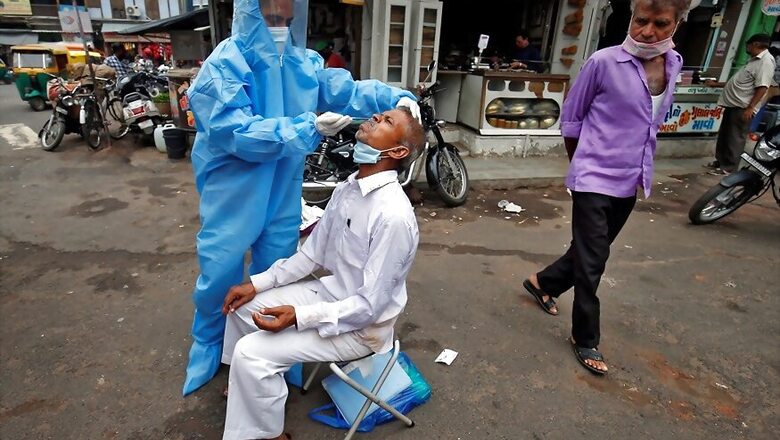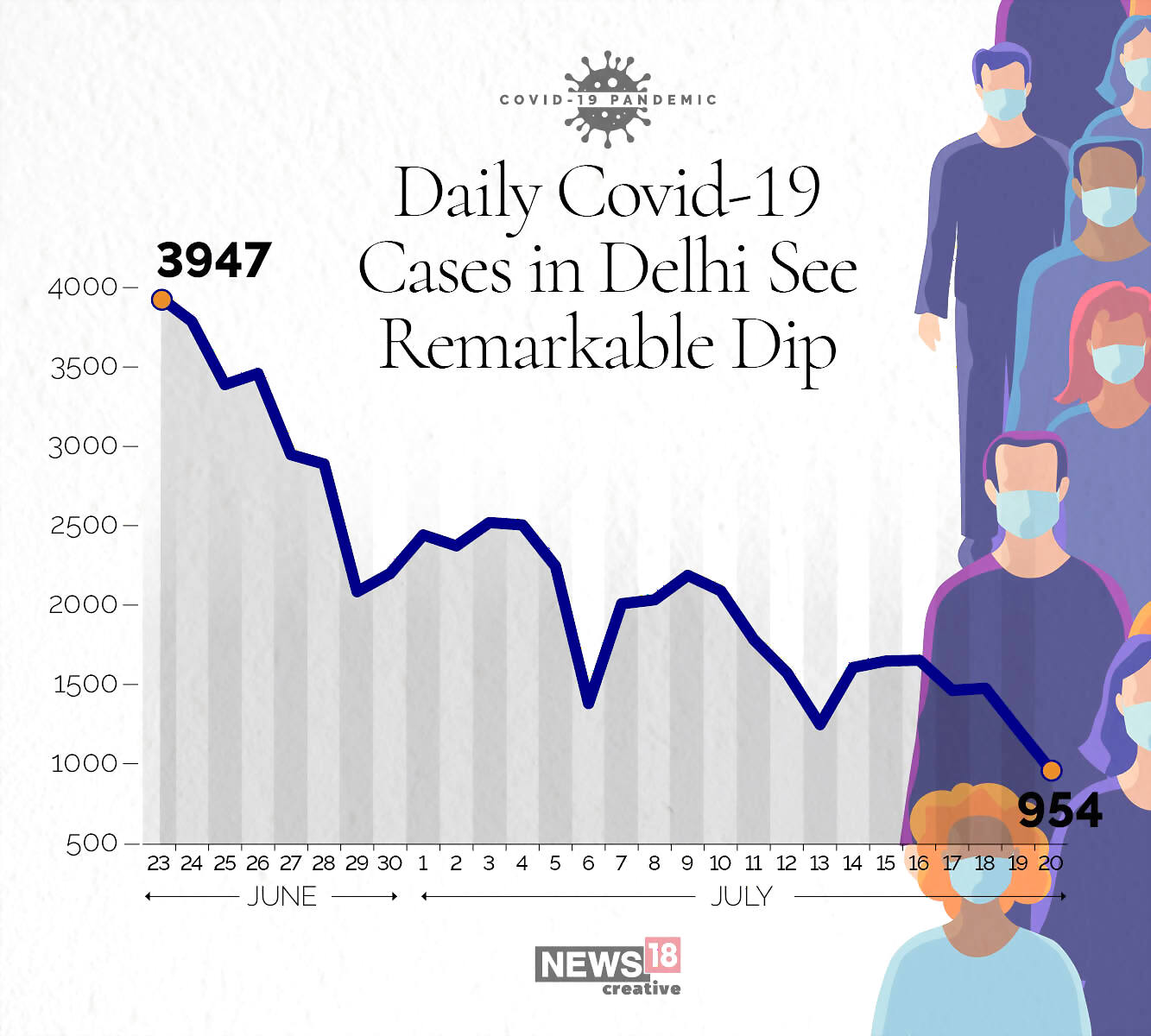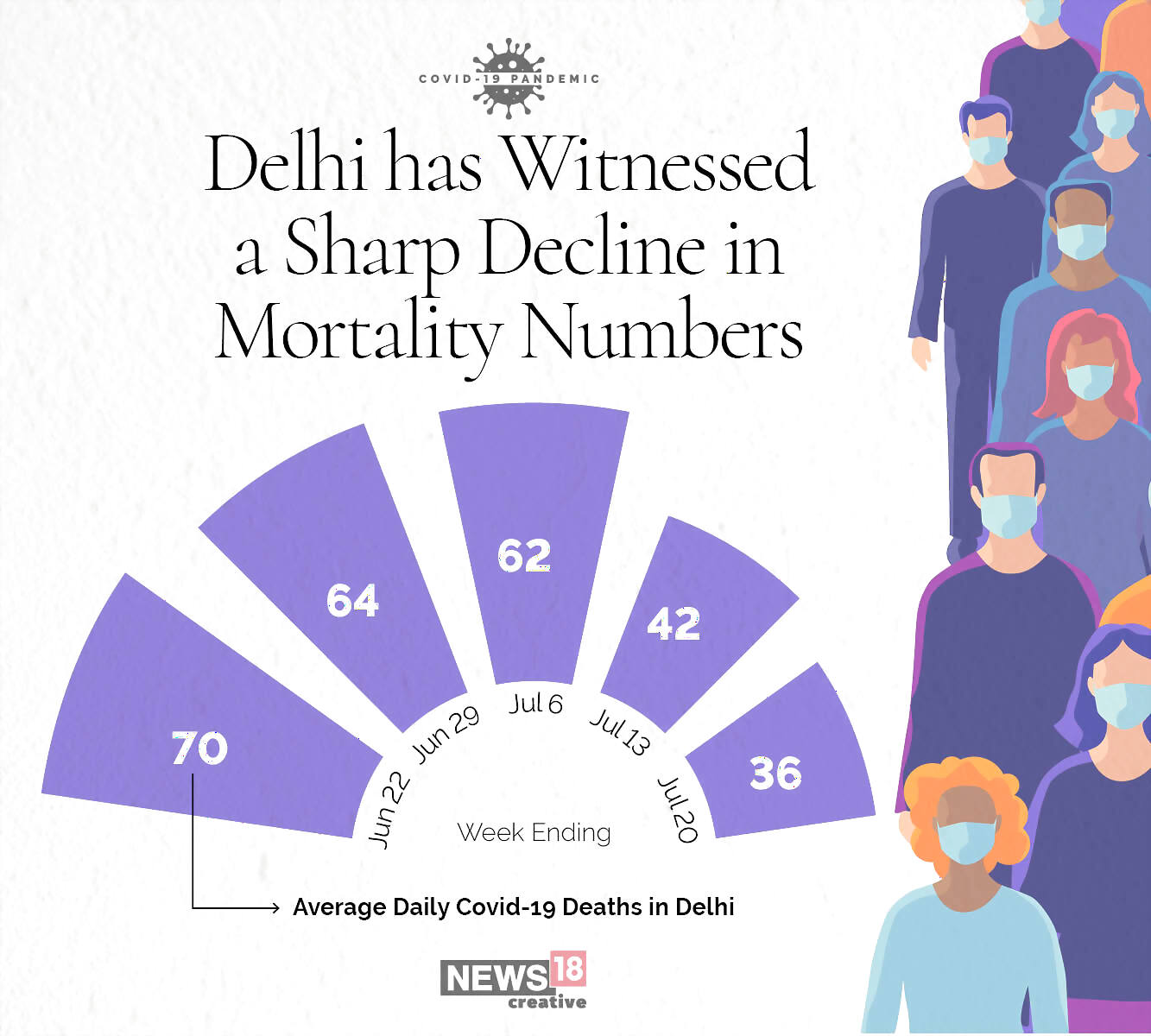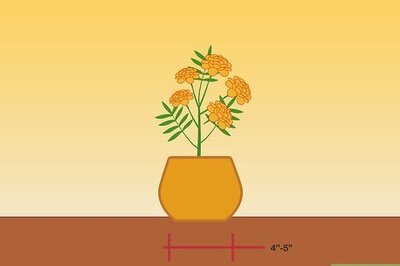
views
Delhi recorded its lowest single-day Covid-19 count in 50 days as the daily cases curve went below 1,000 for the first time since June 1 when the city had registered 990 cases.
It has been a remarkable turnaround for the national capital - from a daily high of 3,947 cases on the 23rd of June to just 954 cases on the 20th of July.

DELHI WITNESSES MASSIVE DIP IN DAILY CASES
From an average of 3,215 daily cases for the week ending June 29, the mean dipped to 2,237 on the 6th of July. It came down to 1,845 on July 13 and since then has reduced further to a daily average of 1,430 for the week ending July 20.
No other major city in India has witnessed such a dramatic fall (by more than half) in the number of cases during this period. Mumbai’s daily average has fallen marginally from 1,311 cases on the 29th of June to 1,182 on the 20th of July. Chennai has seen its average fall by a third from 1,888 cases on the 29th of June to 1,237 on the 20th of July.

Delhi’s rate of growth of cases is second only to Mumbai for the period between 1-20 July. But whereas, Delhi has massively ramped up its testing numbers from end June, Mumbai’s testing still remains very low which is primarily responsible for the less number of cases.
Thus, a better estimate to gauge the current extent of the virus is the Positivity Rate.
DELHI’S WEEKLY POSITIVITY RATE DOWN TO 7.27%, SEES SIGNIFICANT DIP
In terms of number of Tests Per 1 Million Population, Delhi with 43,000, has, by far, conducted the maximum number amongst all major states in India.
Delhi has conducted, on an average, 20,241 daily tests for the three-week period from the 30th of June to the 20th of July. Its Weekly Positivity Rate has gone down from 10.97% on the 6th of July to 8.93% on the 13th of July to 7.27% on the 20th of July.
Its Daily Positivity Rate was recorded at 7.14% on the 17th of July, 6.81% on the 18th, 5.99% on the 19th and 8.32% on the 20th.
In contrast, Mumbai has conducted just 5,955 daily tests during the week ending 19th July. Its Weekly Positivity Rate for the week is 20.15%, which basically implies that one in every 5 people being tested in Mumbai is positive.
However, while Delhi has tested more and seen a dip in the Positivity Rate, questions have been raised over the high ratio of antigen vs RT-PCR tests being employed. A very small percentage of the antigen negative is being re-tested by the RT-PCR test and this may lead to an underestimation of cases and give a false sense of security and an inaccurate estimate of the decline in new cases.
But there is another indicator which suggests that Delhi is on the right track – and that is its rapidly declining mortality numbers.

The average number of daily Covid-19 fatalities has almost halved from 70 in the week ending June 22 to 36 on the 20th of July. Delhi reported just 26 deaths each on the 17th and 18th of July (with a Daily Mortality Rate as low as 1.78% and 1.76%) , 31 on the 19th and 35 on the 20th.
This, by far, is the greatest achievement of the administration and authorities over the last one and a half months. The overall Mortality Rate has fallen from 3.72% on the 20th of June to 3.12% on the 1st of July to 3.02% on the 10th of July to 2.96% on the 20th.
Another indicator which suggests that the national capital is on top of things in its fight against the pandemic is the percentage of vacant occupied beds in hospitals. This has risen from 46.71% on June 10 to 51.48% on June 20 to 55.43% on June 29 to 75.14% on July 16, suggesting that the pace of recoveries is constantly improving.
In conclusion, while a high proportion of antigen tests does raise questions on the extent of decline in new cases, the very significant decline in the number of Covid-19 deaths does suggest that Delhi is doing a lot of things right in its battle against the pandemic.
Nikhil Narain

















Comments
0 comment